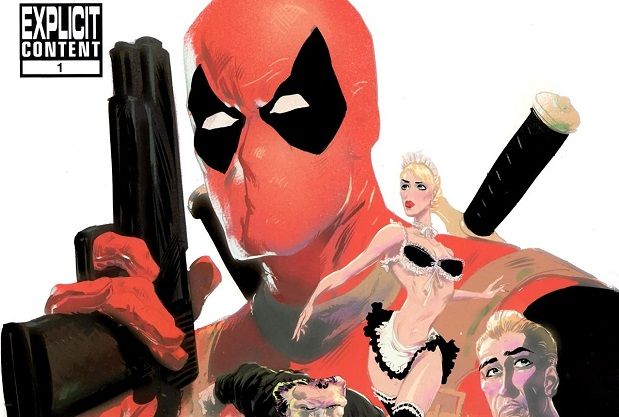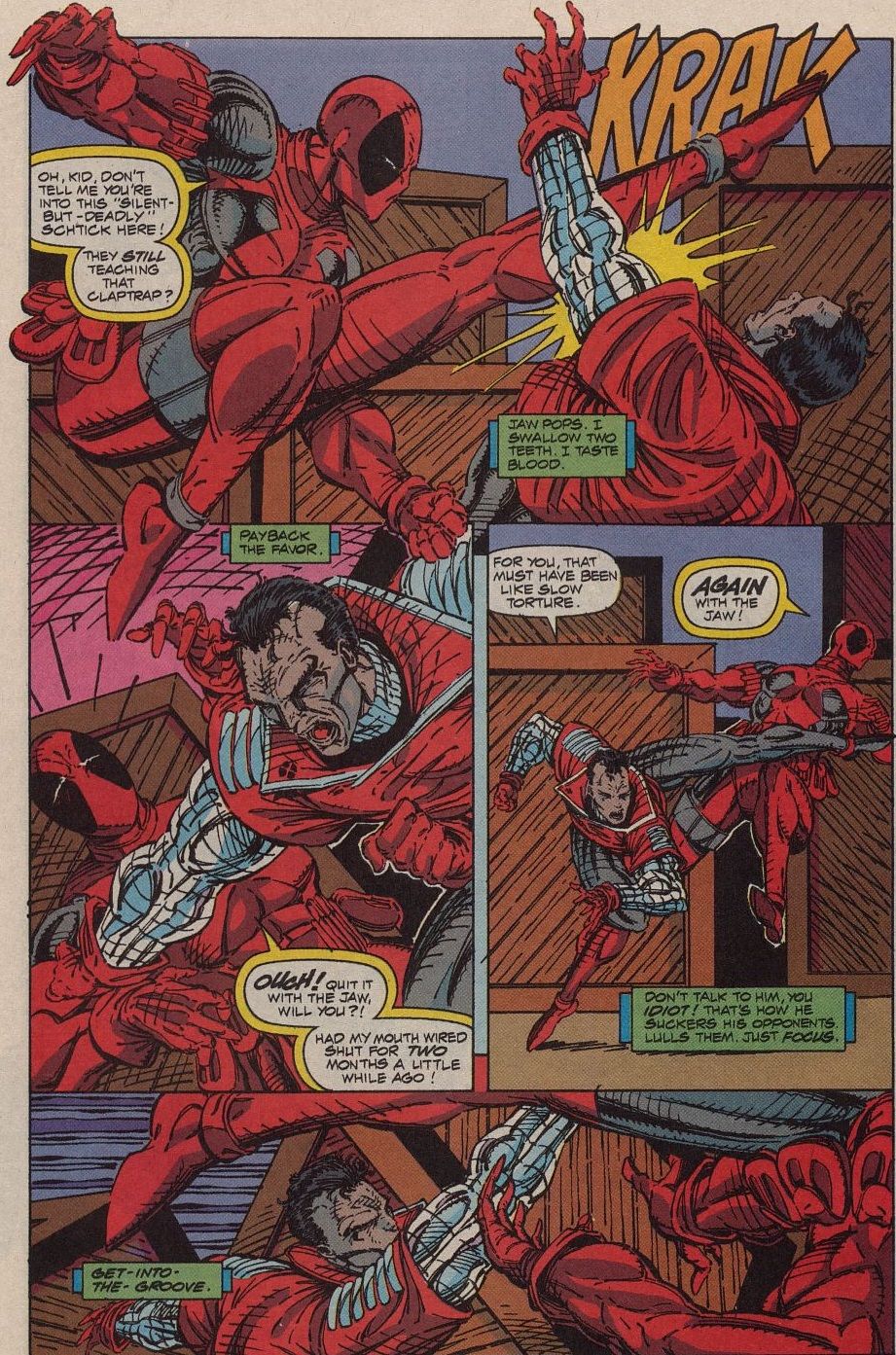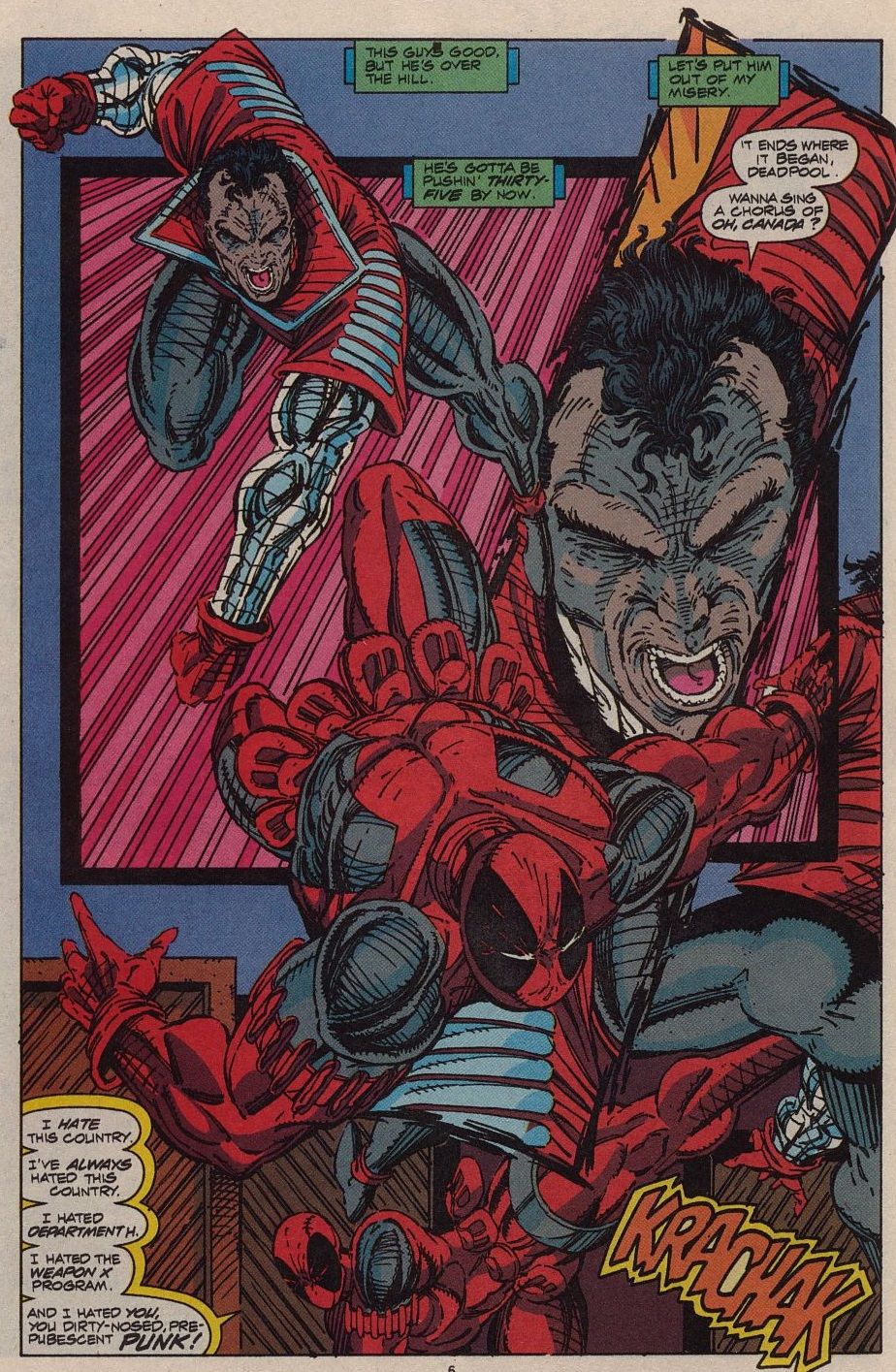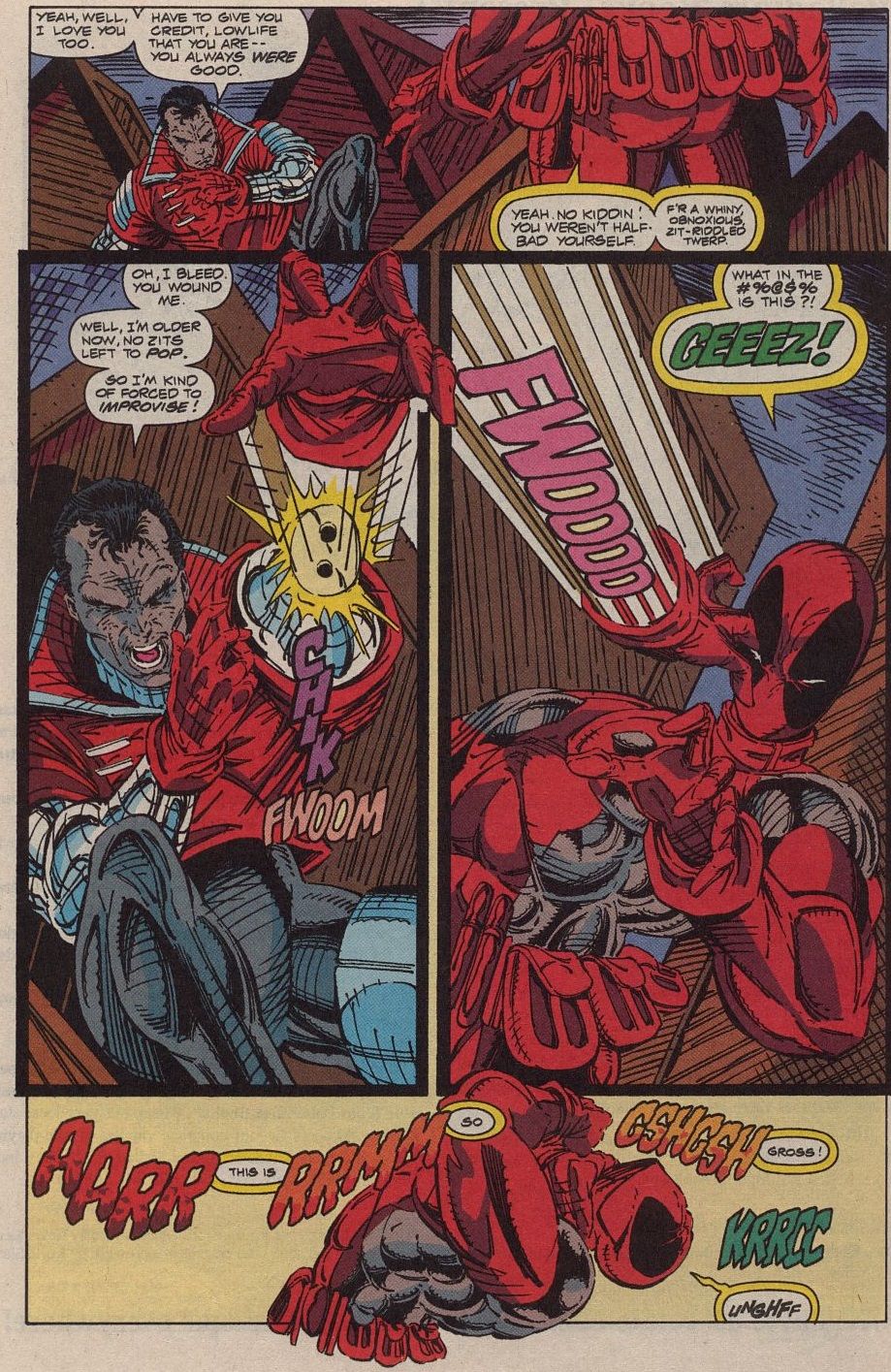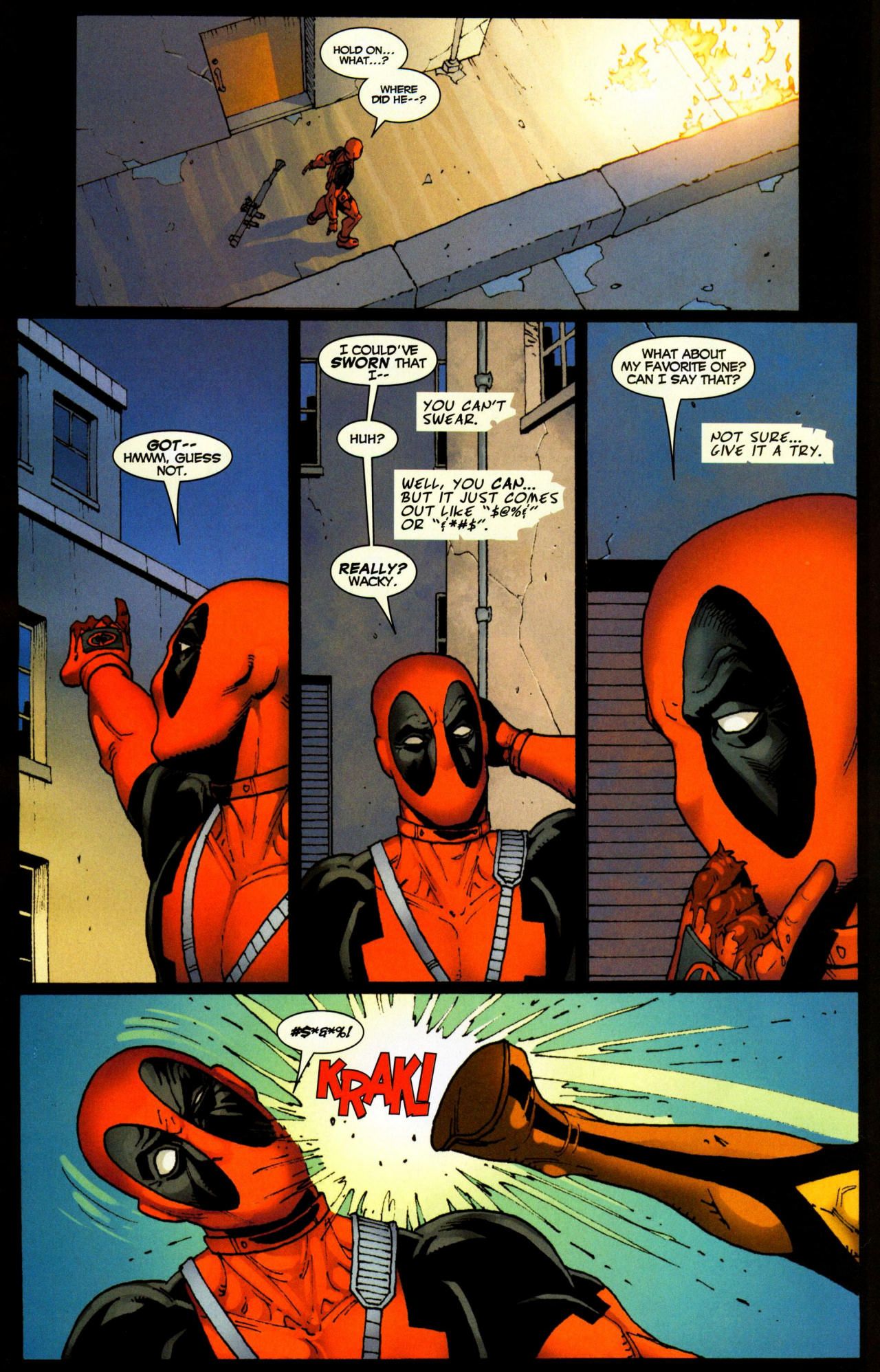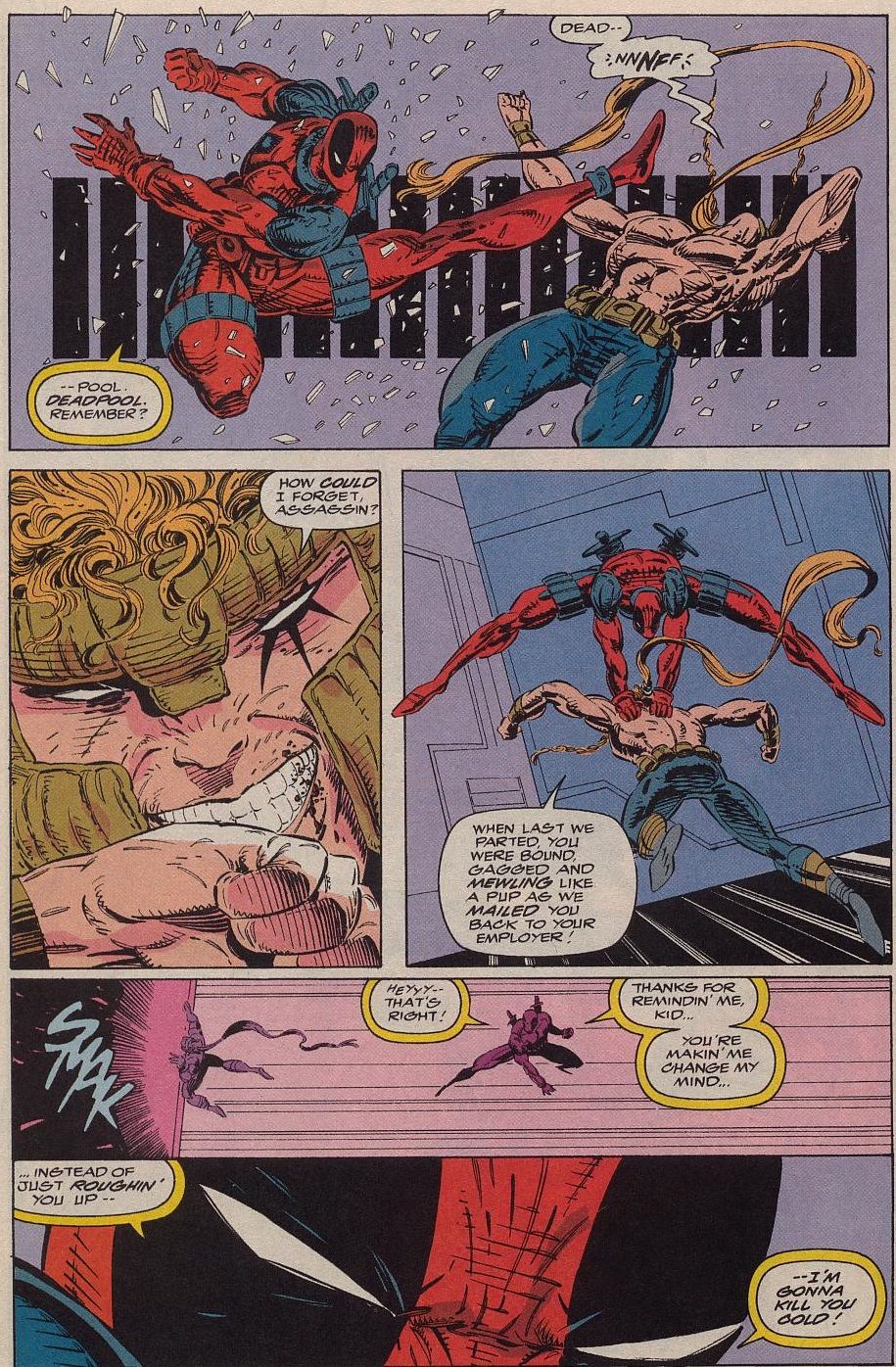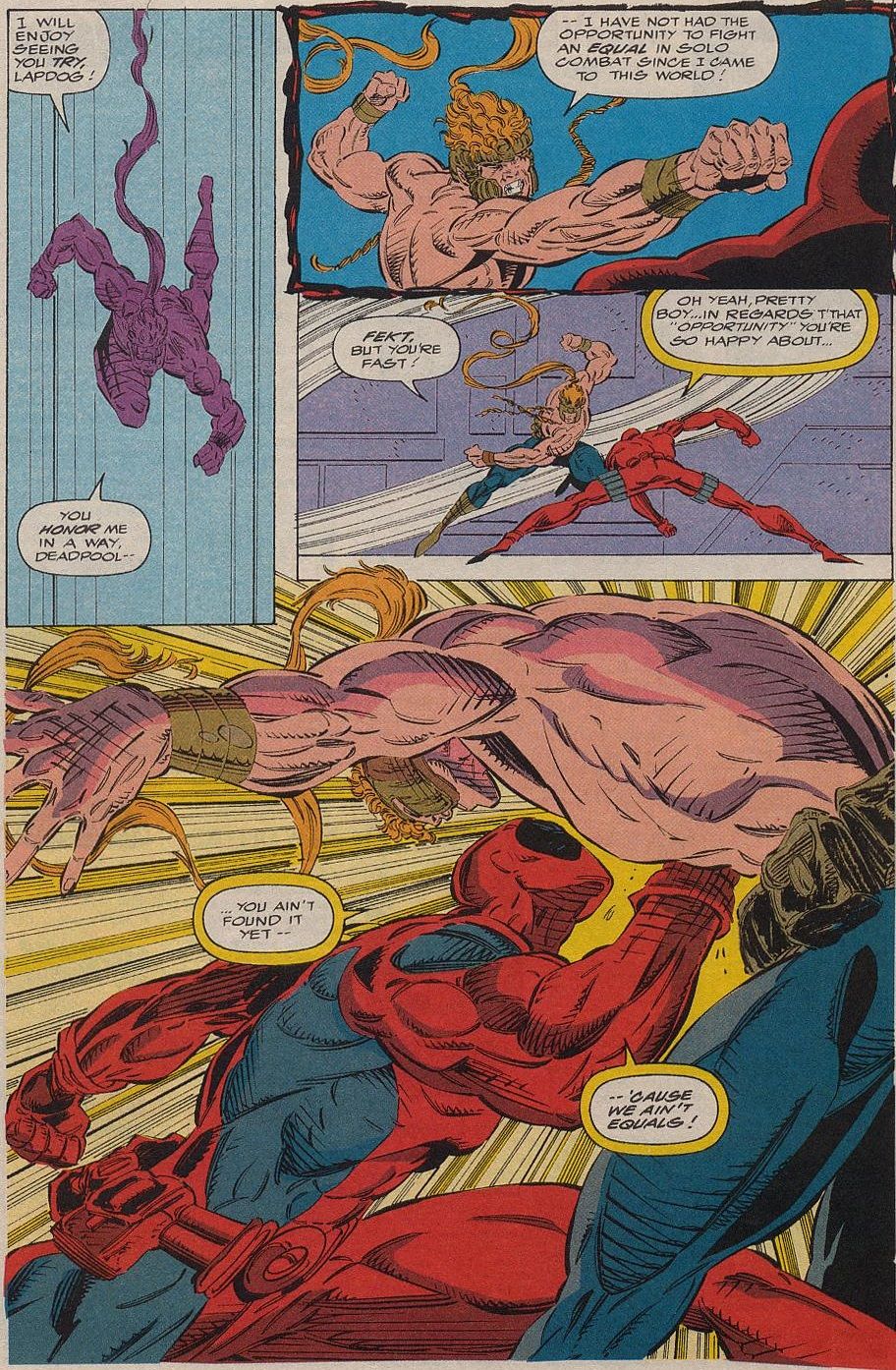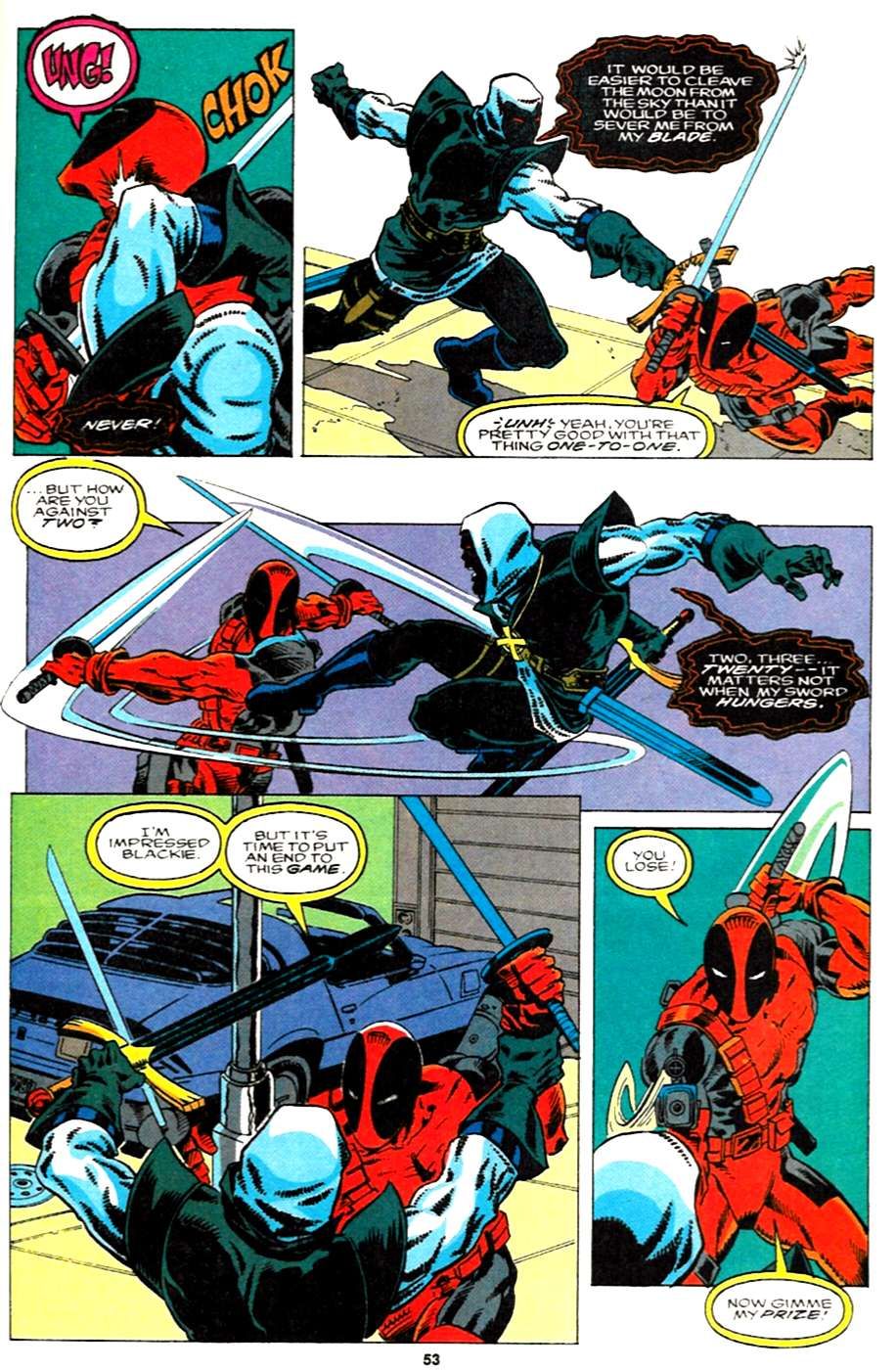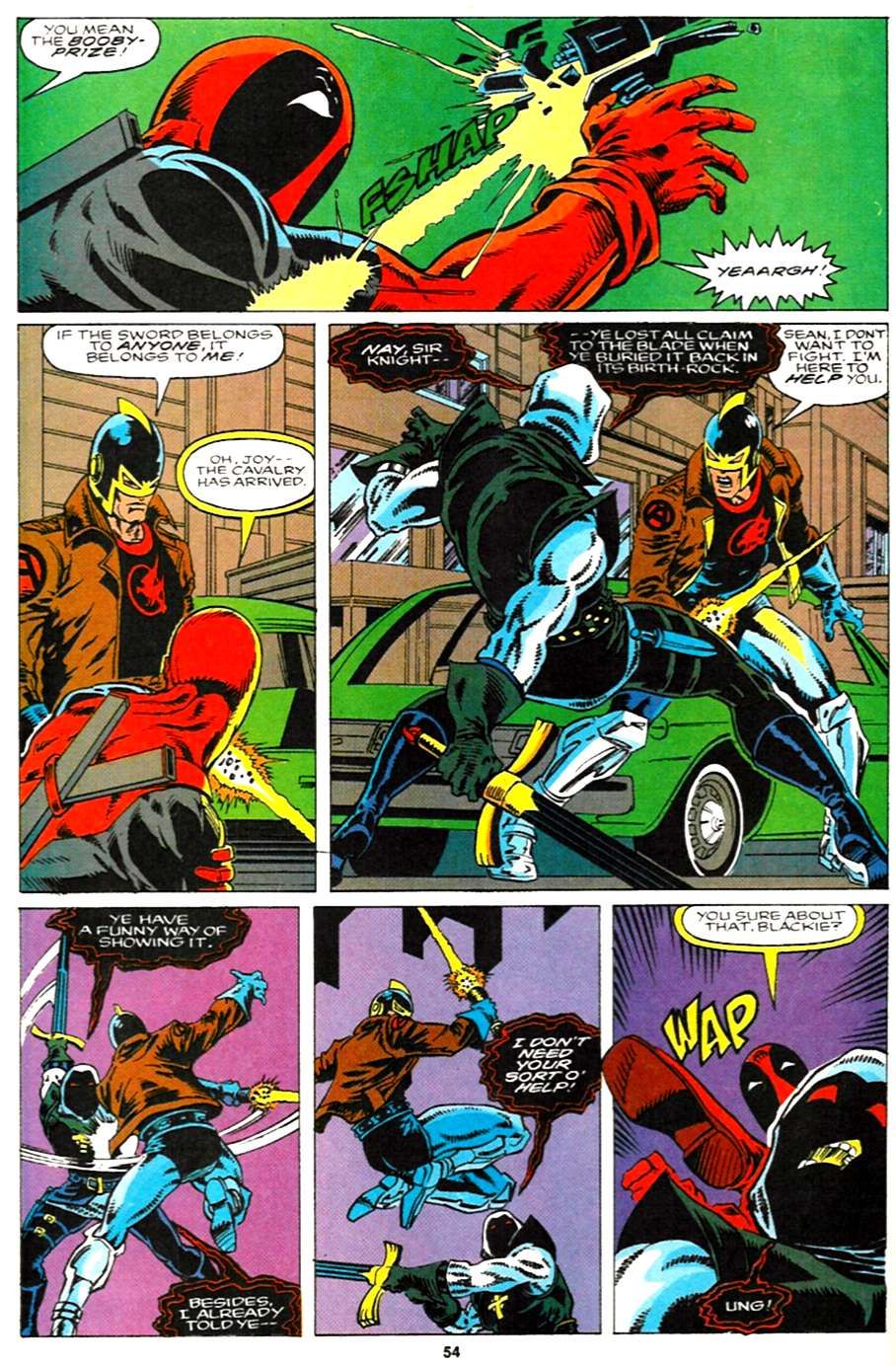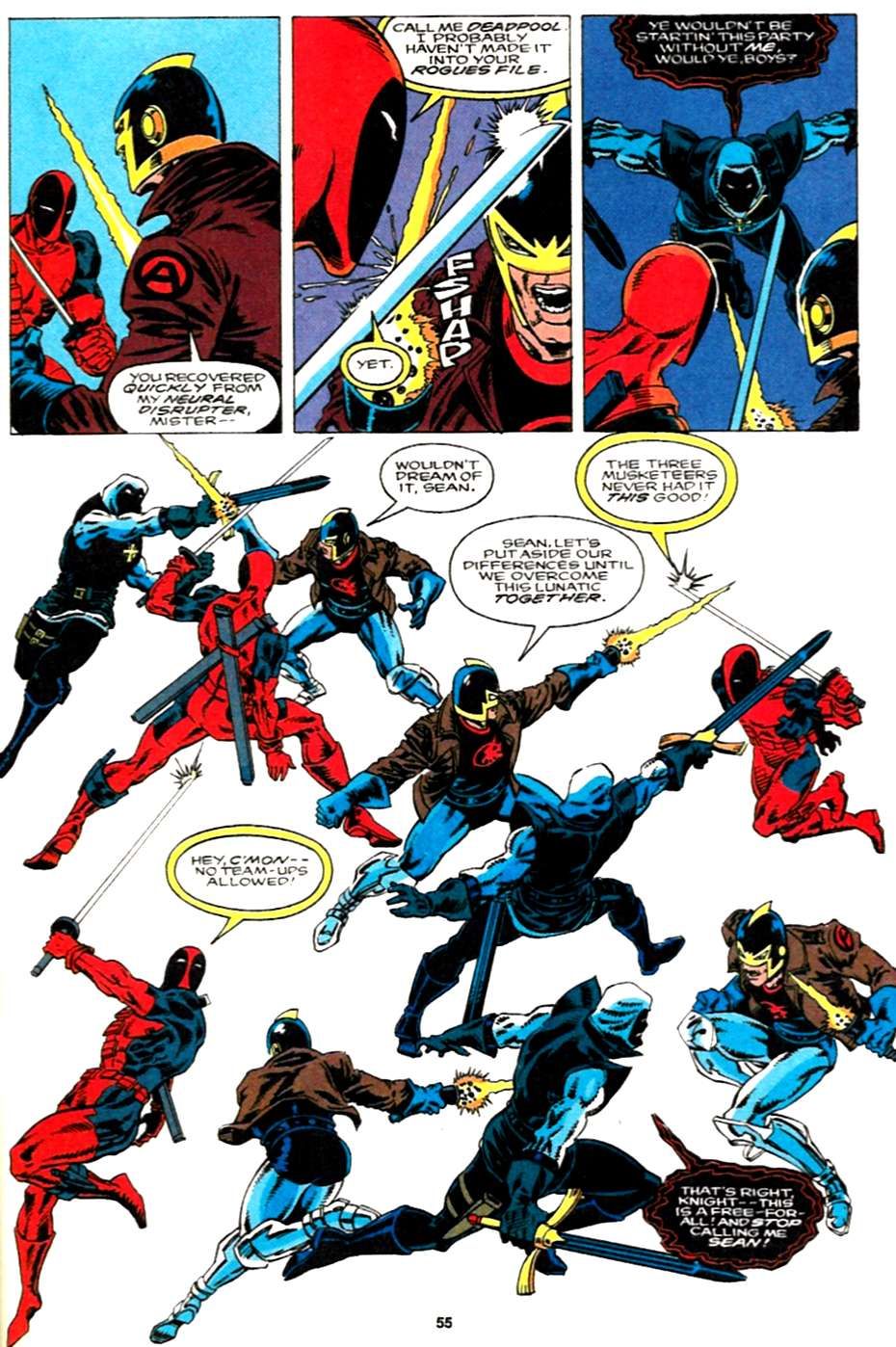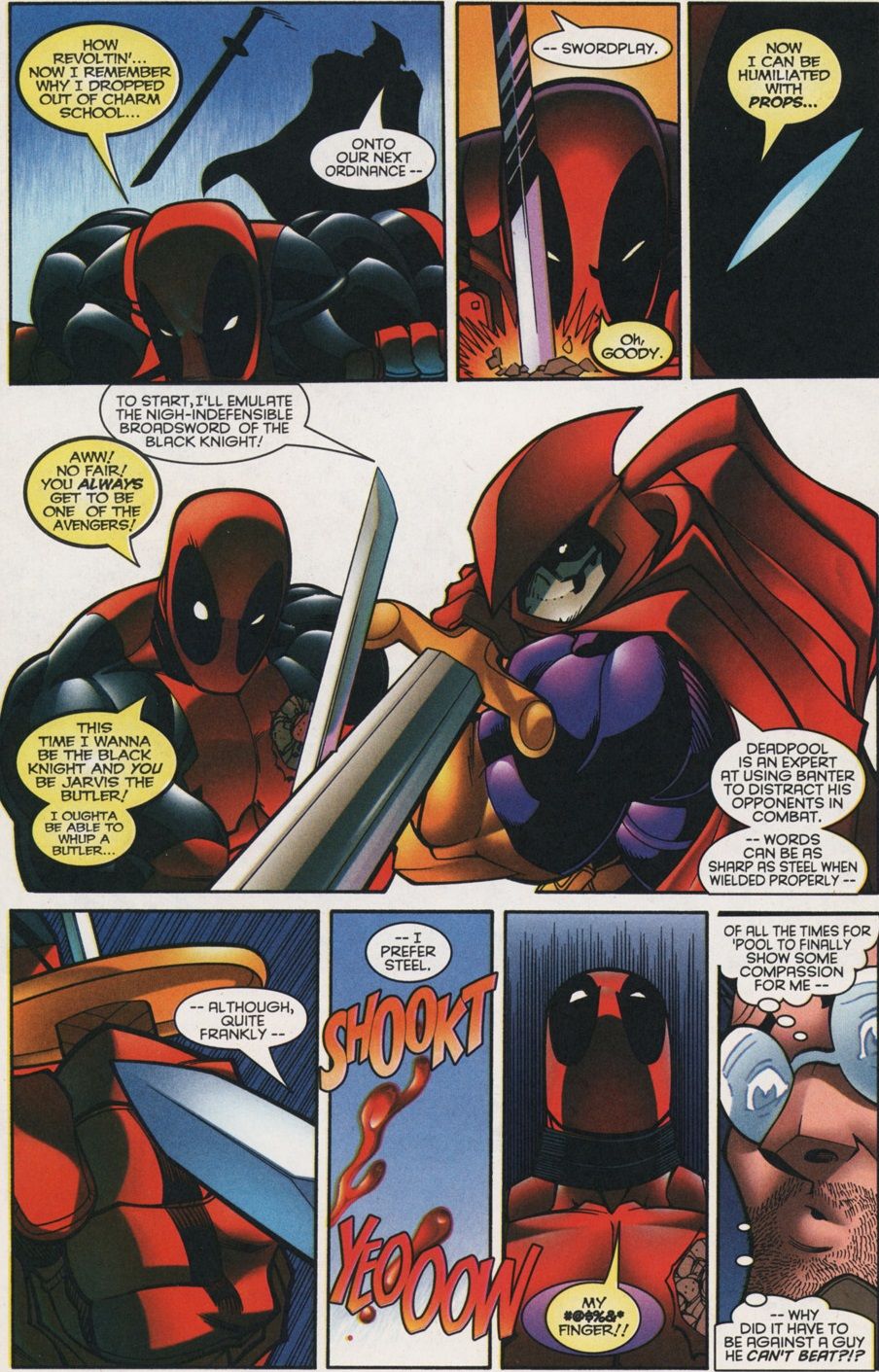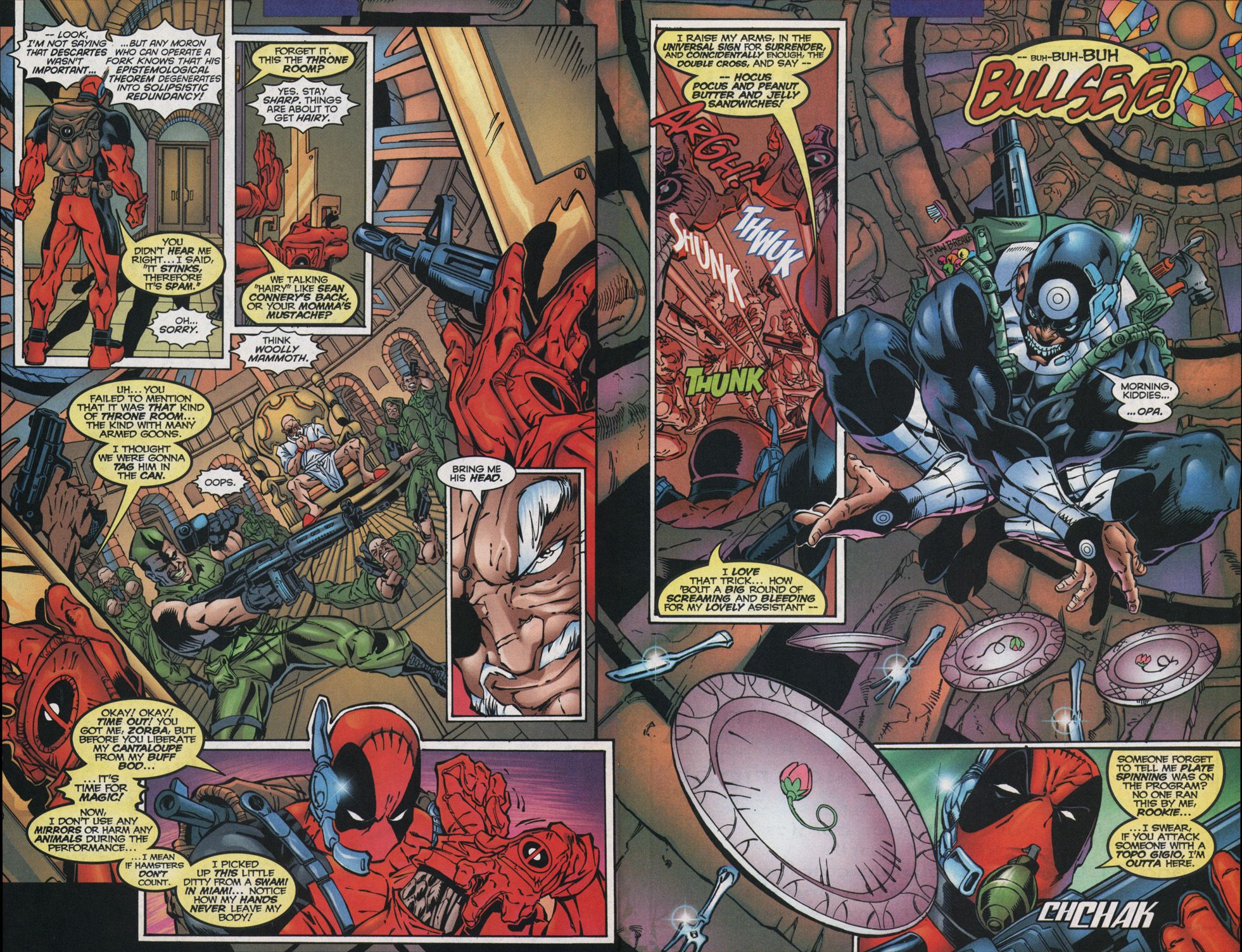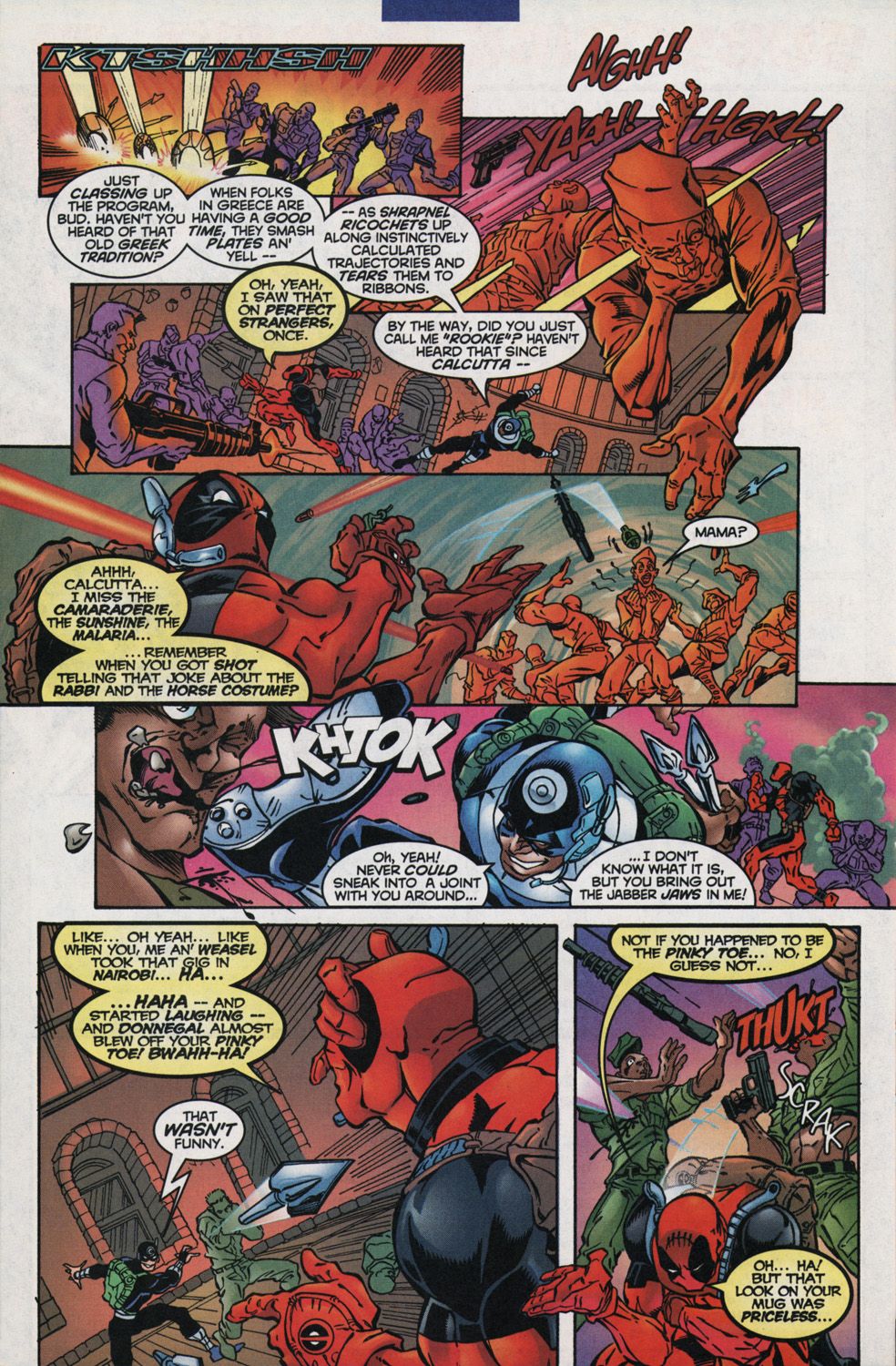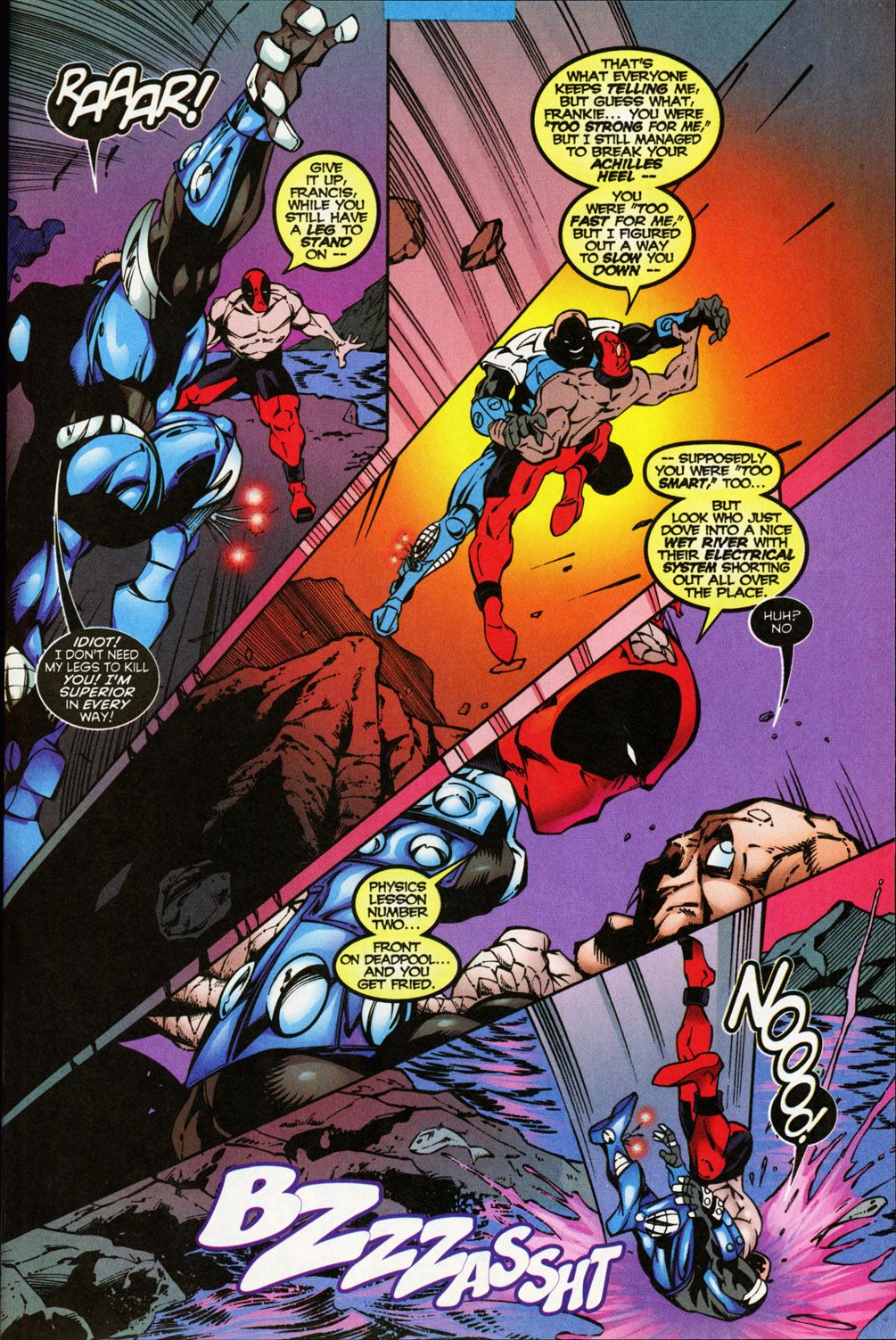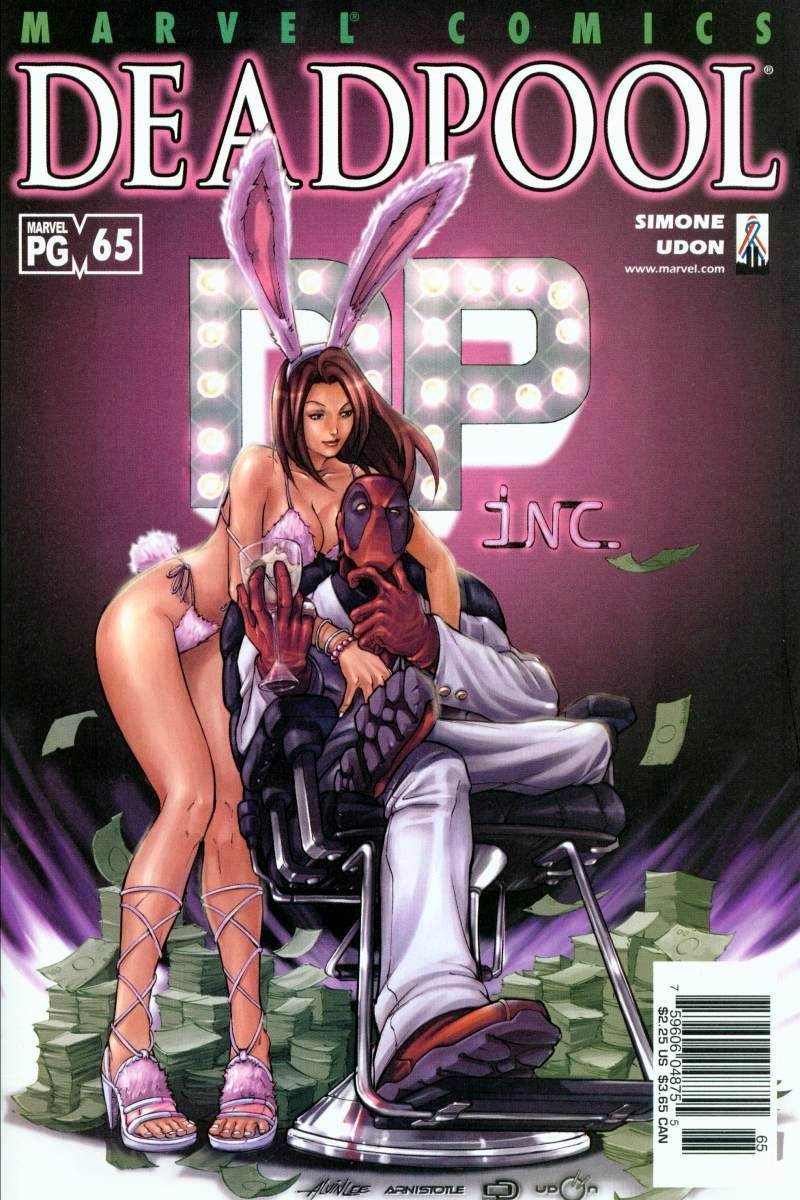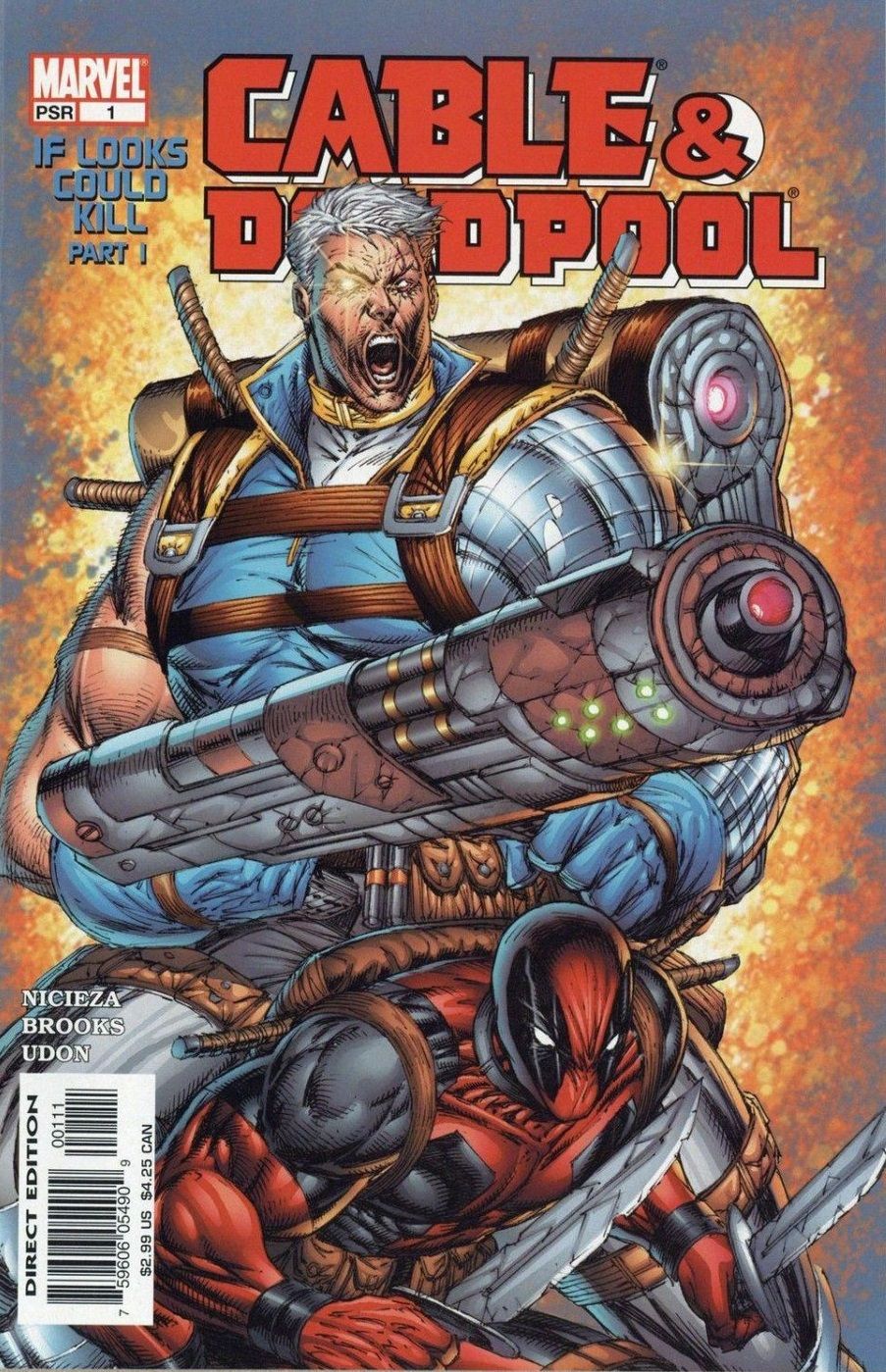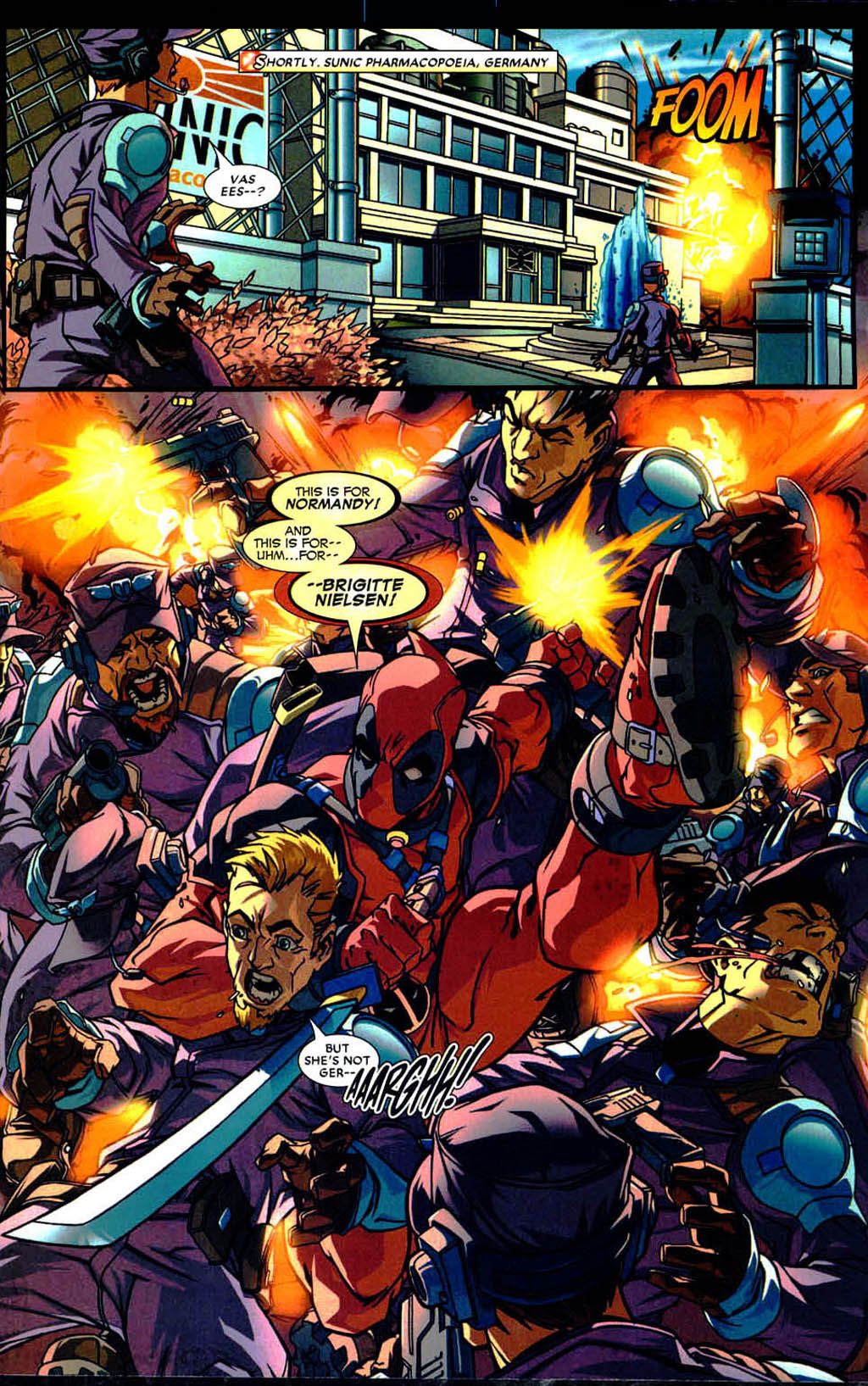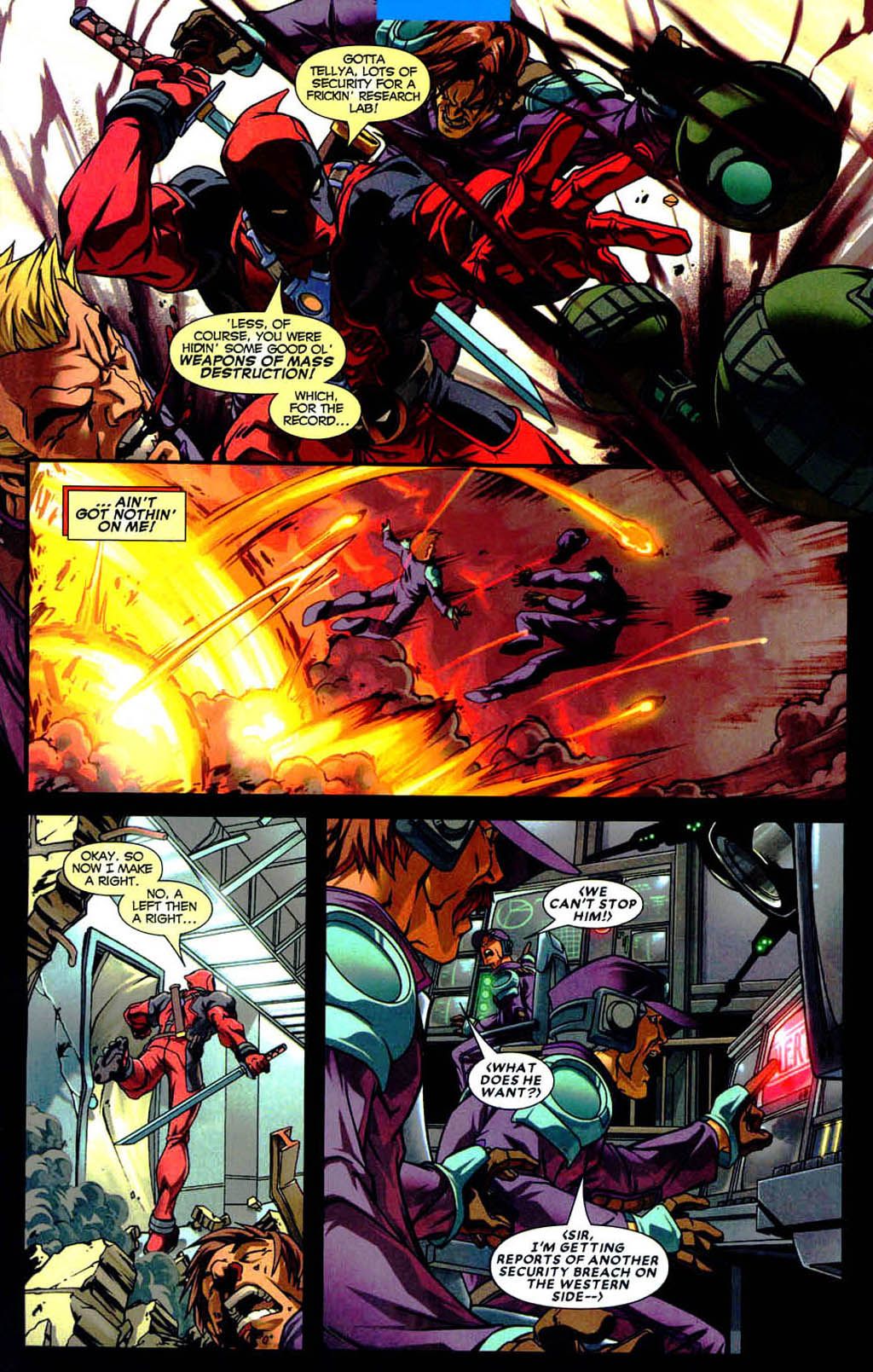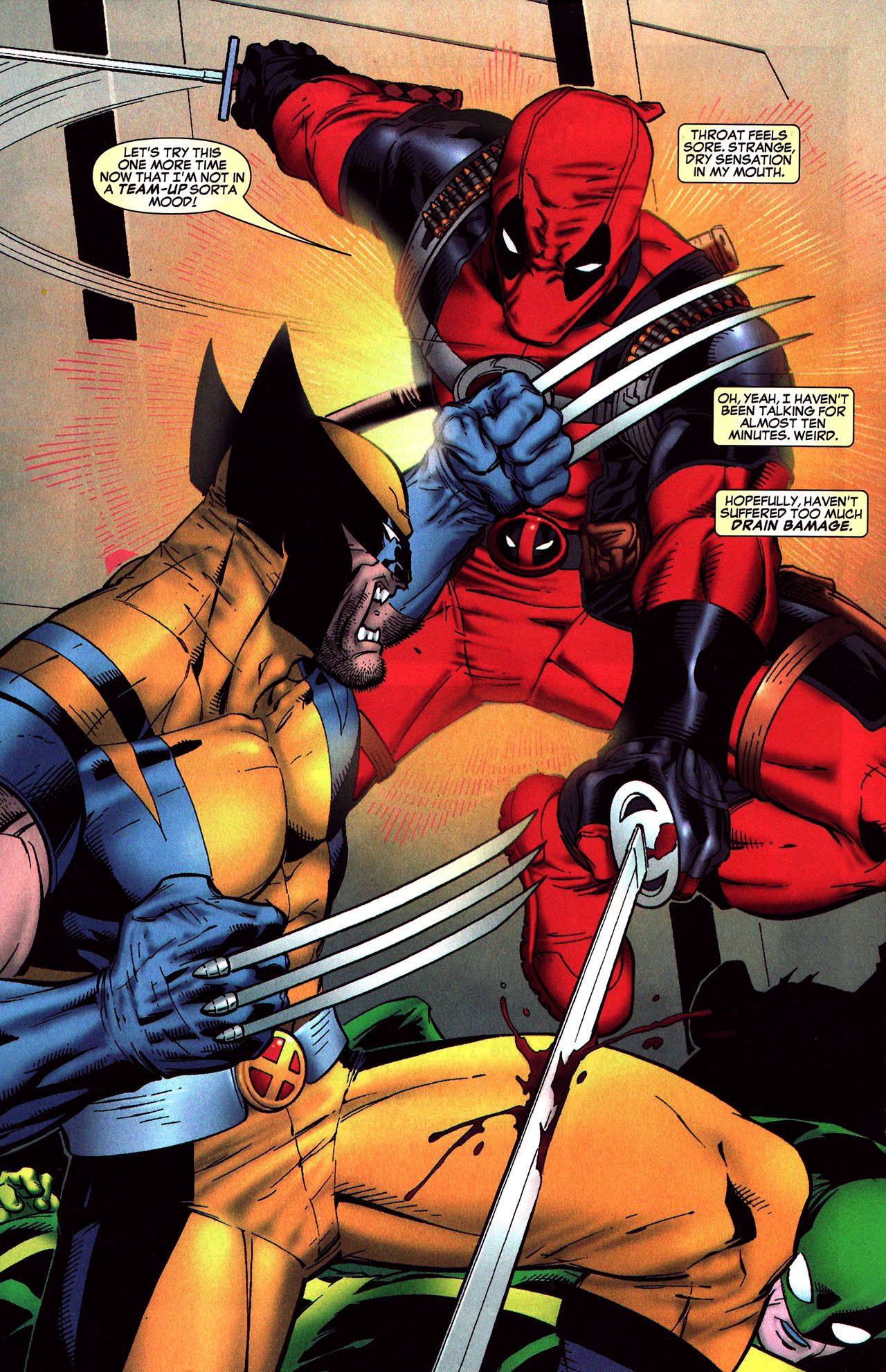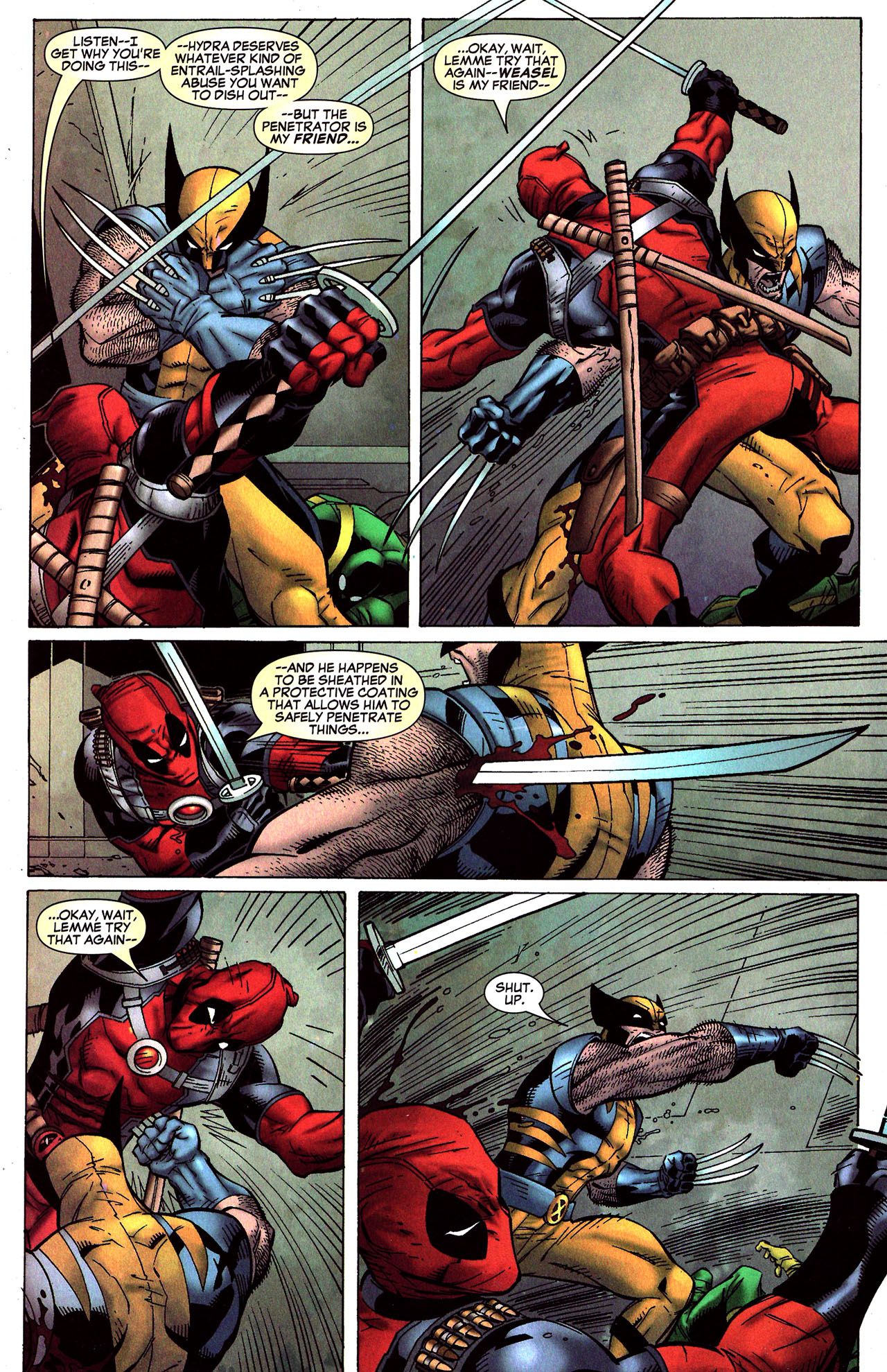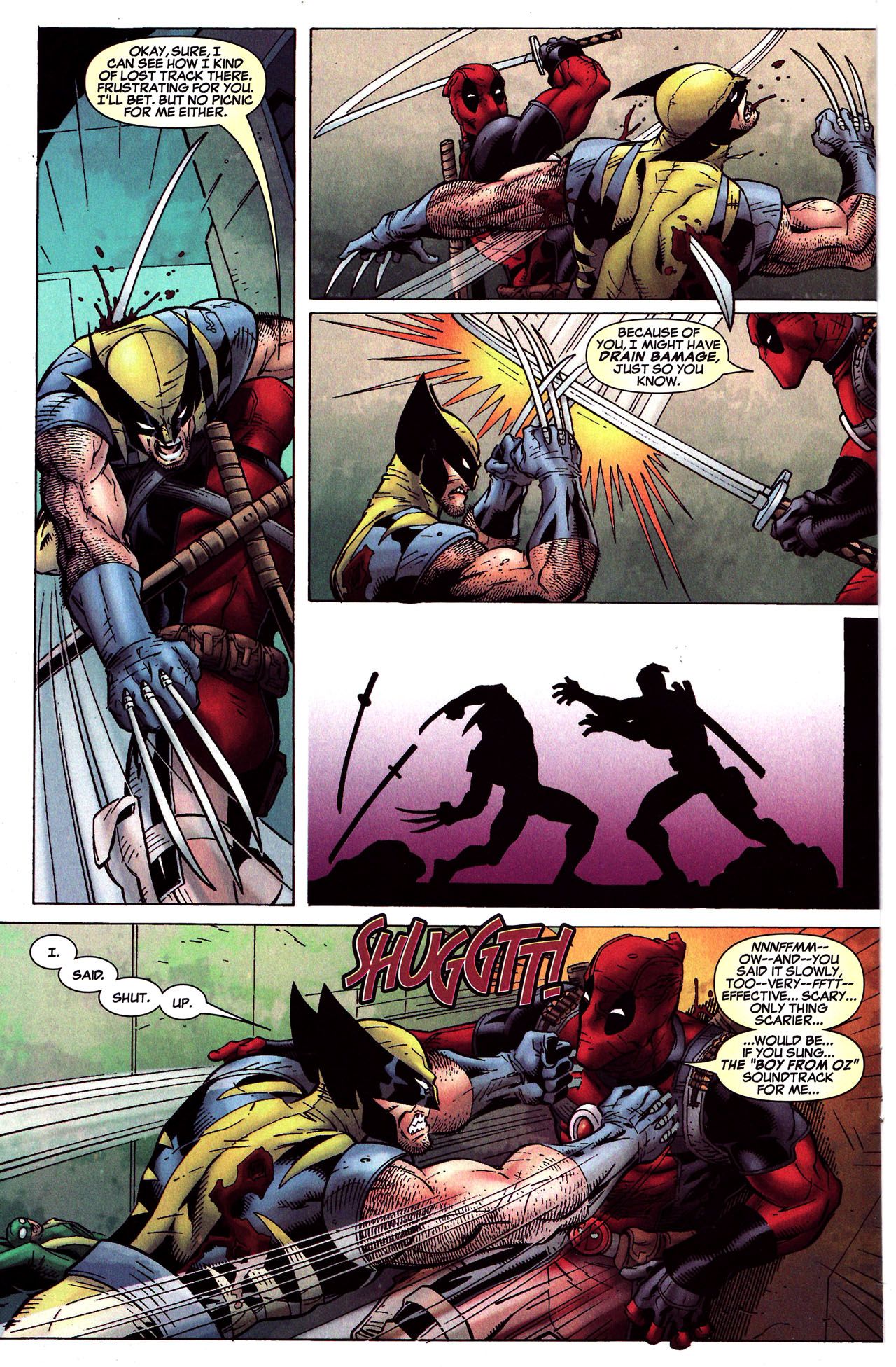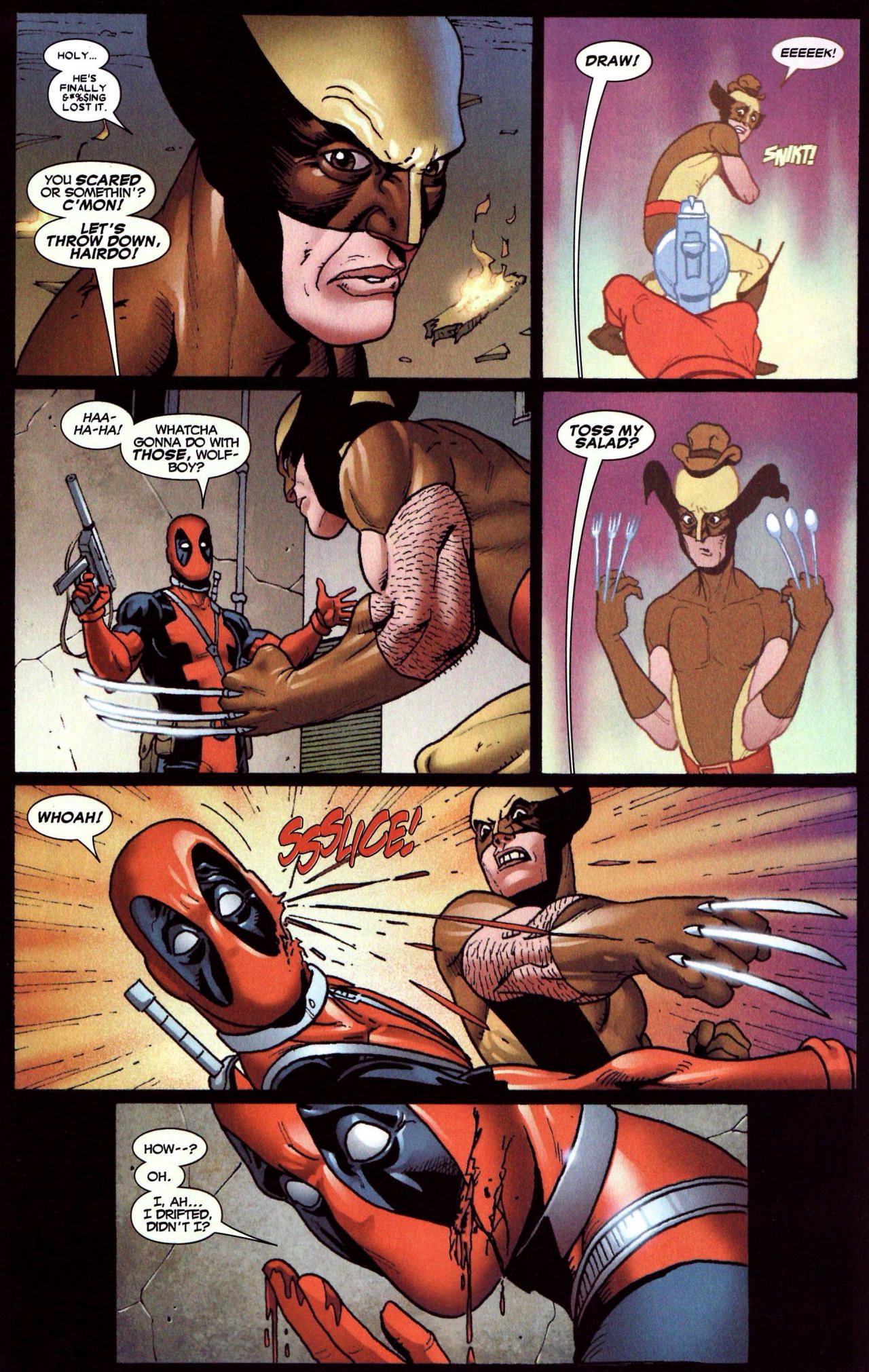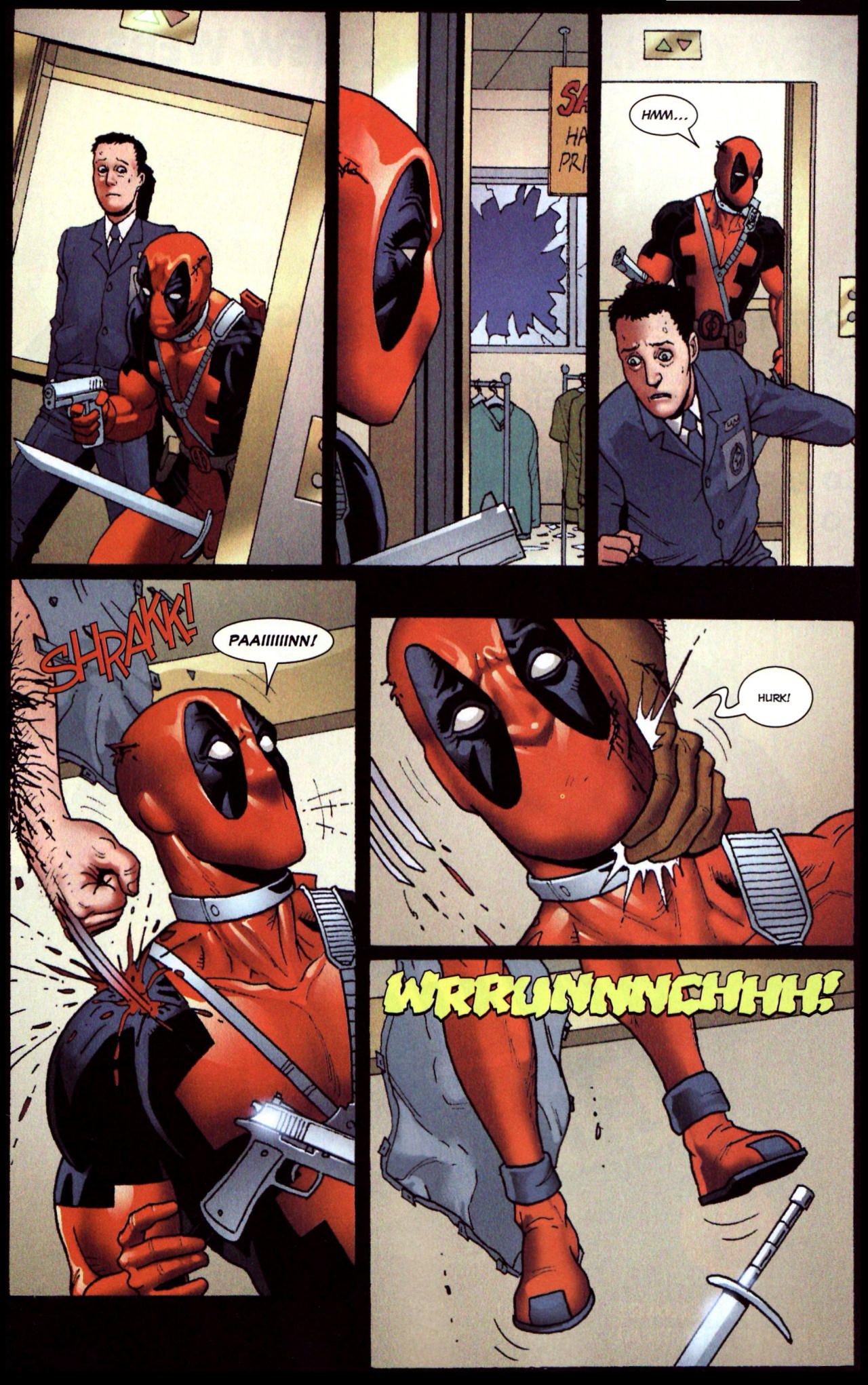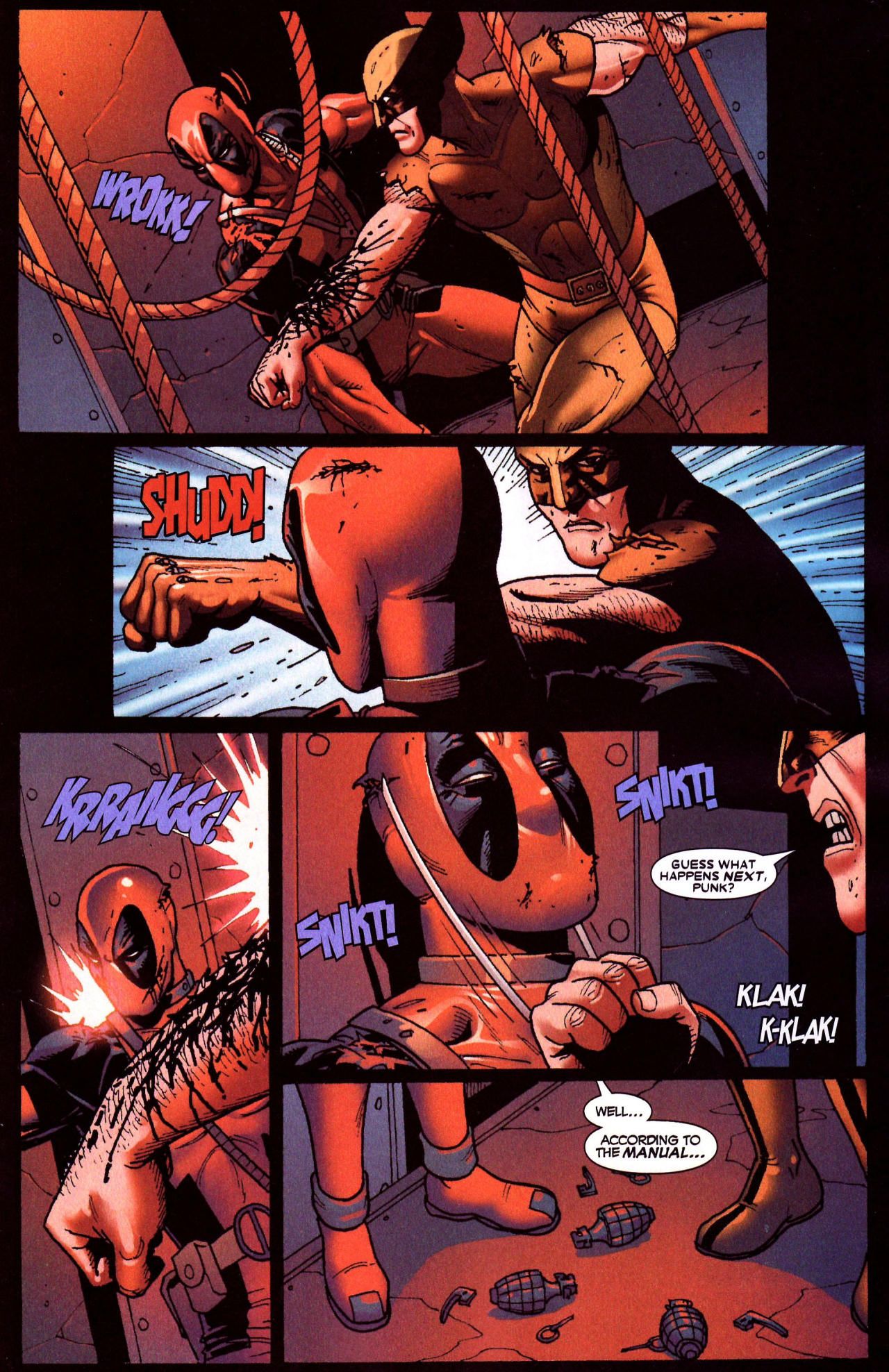Comic Book Questions Answered - where I answer whatever questions you folks might have about comic books (feel free to e-mail questions to me at bcronin@comicbookresources.com). Here is a link to an archive of all the past questions that have been answered so far.
This time around, the question comes courtesy of my friend, Chris N., who asks:
The petition to get a PG-13 cut of Deadpool has generated some internet backlash, with a lot of fans claiming a Deadpool movie that isn't R-rated just isn't Deadpool. Now I haven't read much Marvel this past decade, but I read plenty of Deadpool from the character's first 15 years, and the comic was never R-rated. Where are people getting the idea that Deadpool is an R-rated character?
I think it IS pretty clear that, when introduced, Deadpool was not an R-Rated character. So when did the change occur?
There are four notable ways that a movie is rated R, nudity, sex, profanity and violence. The first two really don't apply to Deadpool (although Deadpool Max has had nudity in it, but that didn't come about until nearly two decades into Deadpool's history). The last two, though, are more at issue here.
Of the two, when it comes to an R-Rating, profanity is a lot stricter than violence.
Profanity-wise, Deadpool used censored comic book cursing very early on. Here it is in just his second appearance in X-Force #2 (by Rob Liefeld and Fabian Nicieza)...
He did it frequently enough that Daniel Way and Steve Dillon even made fun of it in Wolverine: Origins #23...
Bleeped out cursing is not a common trope in films, so you could say that he would therefore "need" to curse in the film, which would lead to a R (you can curse in PG-13 films, but in very small quantities). However, for the sake of argument, let's even say that cursing is not an important part of Deadpool. The key part is the next step - the violence. Go to the next page to see how Deadpool's violence has evolved over the years into R-Rated territory...
Early on, Deadpool was easily within PG-13 limits when it came to violence, like this bit from X-Force #11 (by Liefeld, Nicieza, Mark Pacella and Dan Panosian)..
He was even able to guest star in the pages of the Avengers (Avengers #366 by Glenn Herdling, Mike Gustovich and Ariane Lenshoek)...
The issue really is blood. Fair or not, the main issue with violence when it comes to PG-13 films versus R films is the amount of gore with the violence. You see, PG-13 films have actually gotten a good deal MORE violent as the years have gone by, as more and more films are trying to avoid getting R ratings to better improve their box office results. Thus, violent films that would normally get an R are trying to tone things down enough to get a PG-13. So how does a violent film get a PG-13 versus an R? The main reason is gore. If you just shoot people with guns without a lot of blood, blow people up, have stuff happen off screen, you're going to be okay. Liam Neeson's Taken films end up with a TON of people getting killed and they are all rated PG-13. This is because they don't have a lot of gore. Guns are actually a huge part of this. You just show people getting shot and killed - if you avoid the gory aspects of the bullets, you'll likely avoid an R. This is why, shockingly enough, gun violence in PG-13 films has actually EXCEEDED R films in recent years. Body count alone does not mean R. You can pile the bodies up there, you just can't do so in a gory fashion. Therefore, going by the current standard for PG-13 film, for years Deadpool stayed well within the PG-13 territory, as he mostly avoided on-panel gore for years, including his first couple of mini-series.
What's fascinating is that this scene from Deadpool #2 (by Joe Kelly, Ed McGuinness and Nathan Massengill might be considered too violent, for even though the actual cut is off panel, the blood splatter might be too much...
But really, Kelly managed to duly avoid blood and gore during his run. Even when Deadpool is seemingly killed by T-Ray in Deadpool #13, there's no blood.
This sequence from Deadpool #16 (by Joe Kelly, Walter McDaniel and Anibal Rodriguez) is probably as gory as this era of Deadpool got (it's fascinating that the Comics Code Authority had more relaxed standards than the MPAA at the time, as ALL of Deadpool's comics were Comics Code approved until Marvel dropped the code early in the 21st Century)...
As did this bit from Deadpool #19...
But those were exceptions. Even as Kelly left and Christopher Priest, Jimmy Palmiotti and Frank Tieri took over, the book seemed to stay within PG-13 territory. Heck, when Marvel dropped the Comics Code and began to use MPAA ratings (before they learned that you can't actually just use MPAA ratings without licensing said ratings from the MPAA), they specifically termed Deadpool a PG book...
(Said rating really didn't accurately reflect the comic inside, though, which was more of a PG-13 book)
The PG-13 level of violence kept up with the move to Cable and Deadpool, which got a PSR rating...
PSR was "Parental Supervision Recommended," Marvel's version of PG (there was also PSR+). As you might imagine, that was considered confusing. But anyhow, check out the violence...
That's perfect PG-13 violence.
By the end of that run, however, while Marvel went to the more understandable T+ rating for the book (Recommend for teens and older, so basically PG-13), the violence got a lot bloodier. Check this out from Cable and Deadpool #44...
That was early 2007. Cable and Deadpool ended six months later.
At the end of 2007, Deadpool made his first "parental advisory" appearance when Daniel Way and Steve Dillon revamped him in Wolverine Origins #20, which came out at the end of 2007...
This led to Deadpool's ongoing written by Way in 2008 and since then, the violence has clearly been R-rated, and as such, the books have been labeled "parental advisory" ever since. I don't think it is a coincidence that the violence level ratcheted up at the same time the rating went to Marvel's equivalent of R.
That, I think by the end of the Cable and Deadpool series, he was pretty much at that point anyways. So, either way, my answer would be "He became an R-Rated character in 2007."
So there ya go, Chris! Thanks for the question! If anyone else has a question, drop me a line at bcronin@comicbookresources.com.

